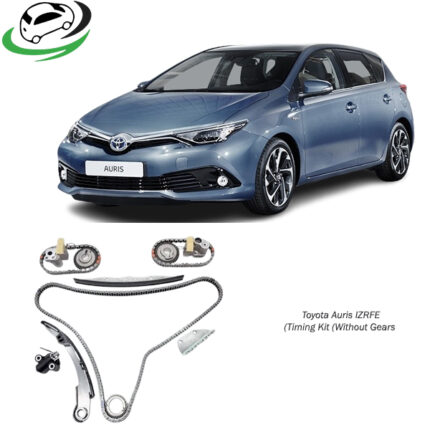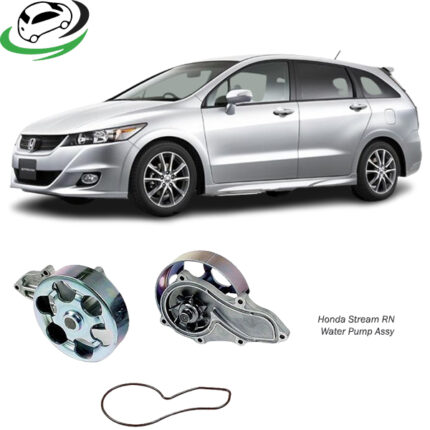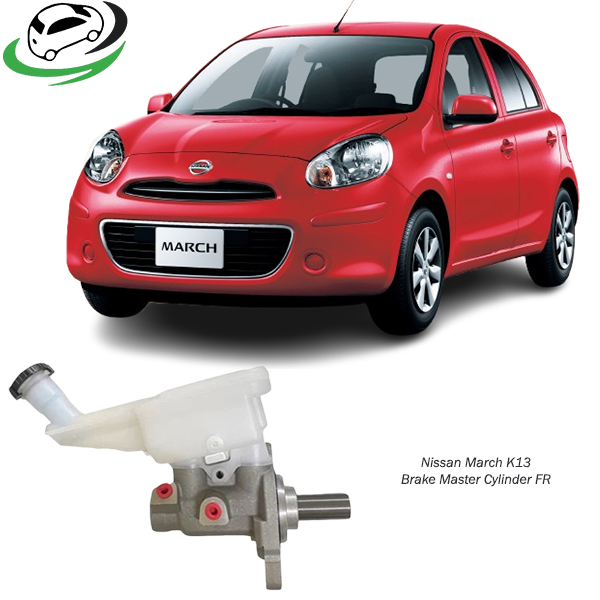-20%
Get Nissan March K13 Brake Master Cylinder FR D6010-1HJ1A
The brake master cylinder is a critical component in a vehicle’s braking system, responsible for converting the mechanical force from the brake pedal into hydraulic pressure. This hydraulic pressure then activates the brake calipers or wheel cylinders, causing the brake pads or shoes to press against the rotors or drums, thereby slowing or stopping the vehicle. Here’s a comprehensive exploration of the brake master cylinder, covering its definition, components, function, types, working mechanism, maintenance, common issues, and importance in vehicle safety.
Definition and Components
Definition
The brake master cylinder is a hydraulic pump that converts the force applied to the brake pedal into hydraulic pressure. This pressure is transmitted through the brake lines to actuate the brakes, allowing the driver to control the vehicle’s deceleration and stopping.
Components
- Reservoir: Holds brake fluid, which is essential for transmitting hydraulic pressure. It has a fluid level sensor to indicate low fluid levels.
- Master Cylinder Body: Contains pistons, seals, and reservoir connections. It converts mechanical force from the brake pedal into hydraulic pressure.
- Pistons: Plungers inside the master cylinder body that push brake fluid through the brake lines when the brake pedal is depressed.
- Seals: Prevent brake fluid leakage and maintain hydraulic pressure within the master cylinder.
- Brake Fluid Ports: Connect to the brake lines, directing pressurized fluid to the brake calipers or wheel cylinders.
- Brake Fluid: A specially formulated hydraulic fluid that withstands high temperatures and pressure to ensure consistent brake performance.
Function and Working Mechanism
Function
When the brake pedal is depressed, it activates the master cylinder’s pistons. These pistons force brake fluid out of the master cylinder reservoir and into the brake lines. The hydraulic pressure created by the master cylinder is transmitted equally to all brakes, ensuring balanced braking force across the vehicle.
Working Mechanism
- Brake Pedal Activation: When the driver presses the brake pedal, a pushrod connected to the pedal moves into the master cylinder.
- Piston Movement: The movement of the pushrod inside the master cylinder forces pistons to move forward, compressing brake fluid in the cylinder.
- Hydraulic Pressure Generation: As the pistons move forward, they pressurize the brake fluid. This pressurized fluid is directed through the brake lines to the brake calipers or wheel cylinders.
- Brake Actuation: The pressurized brake fluid activates the brakes by causing the brake calipers to squeeze the brake pads against the rotors (disc brakes) or wheel cylinders to push the brake shoes against the brake drums (drum brakes).
- Release of Brake Pedal: When the brake pedal is released, springs inside the master cylinder and at the brake calipers or wheel cylinders retract the pistons, allowing brake fluid to return to the master cylinder reservoir.
Types of Brake Master Cylinders
Single Cylinder
- Found in most passenger cars and some light trucks. It operates both the front and rear brake circuits simultaneously from a single piston and reservoir.
Dual Cylinder
- Common in modern vehicles, especially those equipped with anti-lock braking systems (ABS). It has two separate hydraulic circuits: one for the front brakes and one for the rear brakes. If one circuit fails, the other can still provide braking force.
Tandem Cylinder
- Also known as dual master cylinders, these were used in older vehicles and consist of two separate master cylinders in one unit. Each cylinder operates a separate brake circuit, providing redundancy in case of a hydraulic system failure.
Importance in Vehicle Safety
Reliable Braking Performance
The master cylinder’s ability to convert mechanical force into hydraulic pressure ensures that the vehicle can stop effectively and predictably. Reliable braking performance is essential for driver and passenger safety.
Emergency Braking
During emergency braking situations, the master cylinder allows the driver to apply maximum braking force quickly and efficiently, minimizing stopping distances and potential collisions.
Brake System Balance
The master cylinder maintains brake system balance by ensuring equal hydraulic pressure to all brakes. This prevents uneven braking and maintains vehicle stability during braking maneuvers.
Integration with Anti-lock Braking System (ABS)
Modern master cylinders are designed to work seamlessly with ABS systems, which prevent wheel lock-up during hard braking. This integration enhances vehicle control and safety, especially on slippery surfaces.
Maintenance and Inspection
Fluid Checks
Regularly check the brake fluid level in the master cylinder reservoir. Low fluid levels can indicate leaks or worn brake pads and should be addressed promptly.
Fluid Replacement
Flush and replace brake fluid according to the manufacturer’s recommended intervals. Brake fluid absorbs moisture over time, which can lead to decreased braking performance and corrosion within the brake system.
Seal Inspection
Inspect master cylinder seals for signs of wear, cracking, or leakage. Damaged seals can compromise hydraulic pressure and brake performance.
Brake System Bleeding
Periodically bleed air from the brake system to maintain hydraulic pressure and ensure proper brake pedal feel. Air bubbles in the brake lines can cause a spongy brake pedal and reduced braking effectiveness.
Component Replacement
Replace the master cylinder if there are signs of internal leakage, excessive wear, or if it fails hydraulic pressure tests. Proper installation and bleeding procedures are essential to maintain brake system integrity.
Common Issues and Symptoms
Brake Fluid Leaks
Leaks around the master cylinder or brake lines can result in a loss of hydraulic pressure, leading to reduced braking effectiveness and potential brake failure.
Spongy Brake Pedal
A spongy or soft brake pedal may indicate air in the brake lines or a failing master cylinder. Bleeding the brake system can resolve air bubbles, while a faulty master cylinder may require replacement.
Brake Warning Light
An illuminated brake warning light on the dashboard may indicate low brake fluid level, hydraulic system failure, or ABS malfunction. Prompt inspection is necessary to identify and address the issue.
Brake Drag or Sticking
Improperly functioning master cylinder pistons or seals can cause brakes to drag or stick, resulting in overheated brake components and reduced fuel efficiency.
Brake Pedal Vibration
Vibration or pulsation felt through the brake pedal during braking may indicate uneven brake pad wear, warped brake rotors, or ABS activation due to improper master cylinder pressure.
Follow us on Facebook for more parts.



